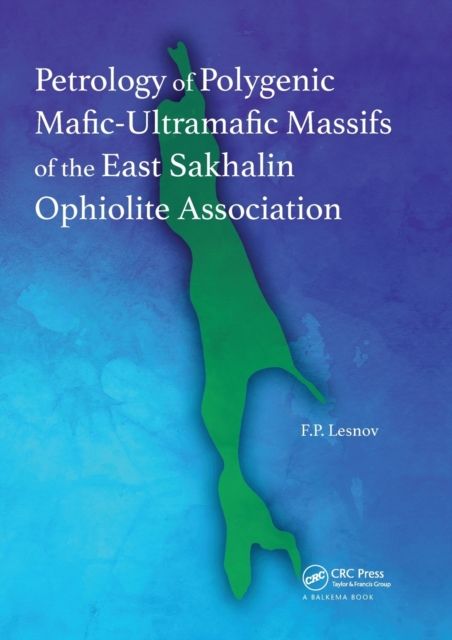
Petrology of Polygenic Mafic-Ultramafic Massifs of the East Sakhalin Ophiolite Association Paperback / softback
by Felix P. Lesnov
Paperback / softback
Description
The monograph is concerned with results of studies of petrology of mafic-ultramafic massifs as part of the East Sakhalin ophiolite association.
It generalizes and interprets a large body of data (mainly original data) on geology, petrography, petrochemistry, and geochemistry of rocks; mineralogy and geochemistry of rock-forming and accessory minerals; chromite and platinum contents, and isotopic age of zircons from rocks of the typical mafic-ultramafic massifs of the East Sakhalin ophiolite association: Berezovka, Shel’ting, Komsomol’sk, and South Schmidt.
Gabbroids from the Berezovka massif contain ultramafic xenoliths.
Ultramafic rocks are locally cut by gabbroid and pyroxenite veins.
Three spatially close but genetically autonomous bodies are distinguished in the structure of the massifs under study: protrusion of upper-mantle restitic ultramafic rocks (harzburgites, lherzolites, and dunites); intrusion of orthomagmatic gabbroids (gabbronorites, gabbro, and norites) that cuts it; and contact-reaction zone, located along the boundaries between gabbroid intrusion and ultramafic protrusion, which consists of hybrid ultramafic rocks (wehrlites, websterites, clinopyroxenites, and their olivine- and plagioclase-containing varieties) and hybrid gabbroids (melano- and mesocratic olivine gabbronorites and gabbro as well as troctolites).
The hybrid ultramafic rocks and gabbroids are the product of interaction between mafic melts and restitic ultramafic rocks.
Taking into account the later formation of the gabbroid intrusions compared to the ultramafic protrusions, the massifs in question are determined as polygenic.
The idea of their polygenic formation is supported by data on the isotopic age of zircons from the Berezovka massif rocks.
In this monograph the author develops his earlier proposed concept of polygenic formation of mafic–ultramafic massifs belonging to ophiolite associations.
The book addresses a wide circle of petrologists and practicing geologists as well as senior-year students and postgraduates studying problems of mafic-ultramafic magmatism.
Information
-
Out of stock
- Format:Paperback / softback
- Pages:300 pages
- Publisher:Taylor & Francis Ltd
- Publication Date:30/06/2020
- Category:
- ISBN:9780367574017
Other Formats
- Hardback from £125.00
- EPUB from £41.39
- PDF from £41.39
Information
-
Out of stock
- Format:Paperback / softback
- Pages:300 pages
- Publisher:Taylor & Francis Ltd
- Publication Date:30/06/2020
- Category:
- ISBN:9780367574017






